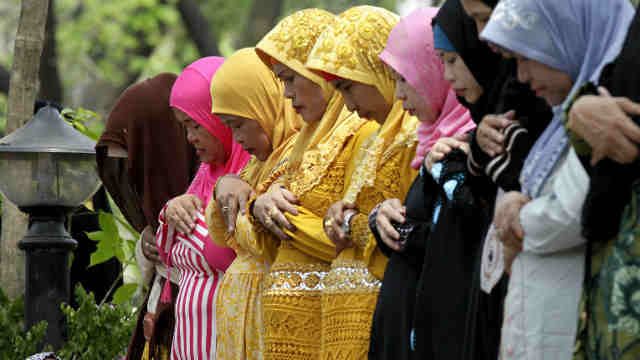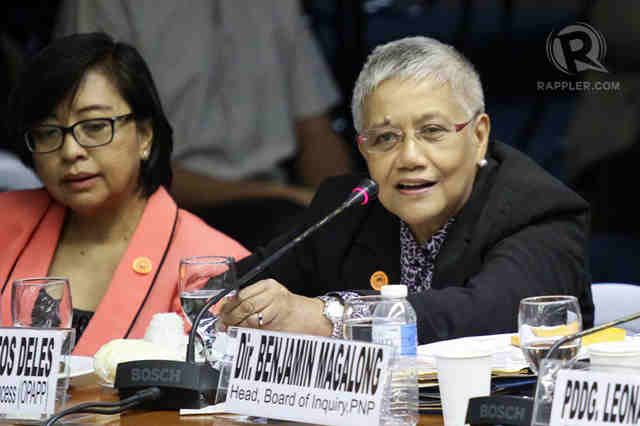SUMMARY
This is AI generated summarization, which may have errors. For context, always refer to the full article.

MANILA, Philippines – In conflict situations, women and children are the most affected.
They are vulnerable to hunger and poverty borne out of wars; their access to basic services like health and education are stalled, and they are exposed to different forms of violence such as rape, trafficking, and displacement.
Many women living in conflict-affected areas of Muslim Mindanao live like this every day.
Such experiences could leave “immediate to long-term multiple physical, sexual and psychological consequences on victims,” a 2014 United Nations study on indigenous women and girls said. They could also pose a “tremendous setback to socio-economic development.”
Among ARMM provinces, “women are more prone to trafficking” than men, said Liezl Bugtay, team leader of the Bangsamoro Conflict Monitoring System (BCMS) of International Alert, a project funded by the World Bank. Bugtay presented the 2011-2014 BCMS report during a gender and peace workshop organized by the Women’s Peace Table and the Women’s Feature Service.
Civilians are mostly the victims in violent conflicts, the report said.
It also showed that Maguindanao had the highest cases of rape in the region, while Lanao del Sur had the most record of domestic violence.
The statistics, however, only account for reported cases.
Women’s participation
Women suffer the most during war, but they are also at the forefront of the ongoing struggle for peace.
The problem, however, is that women are sometimes not given as much as opportunities to participate in the peace process. To help address this issue experienced by women across different parts of the world, the UN adopted a landmark resolution reaffirming “the important role of women in the prevention and resolution of conflicts.”
The UN also made resolutions condemning and addressing sexual violence in armed conflict.
Ten years later, the Philippine government adopted the National Action Plan (NAP) on Women, Peace, and Security, making it the first Asian country and the 16th globally to “operationalize its commitments” to the said UN resolutions.
NAP is also anchored on the Magna Carta of Women, according to the Office of the Presidential Adviser on the Peace Process (OPAPP).
“In the peace process in particular, women have been breaking ground, taking on active roles and succeeding as negotiators, mediators, peacekeepers, peace builders, relief workers, trauma healers, the list goes on,” wrote Presidential Peace Adviser Teresita Quintos Deles in 2014 in OPAPP’s official magazine.
The same sentiment was reflected in a 2010 study commissioned by the Asia Foundation, which observed “long-standing traditions of women’s participation in conflict resolution and mediation” across some conflict-affected areas in Mindanao.
The study also suggested that women’s participation in the peace process could “help solidify the support” for peace among other women, and could “increase the opportunity for women’s perspectives and concerns to be incorporated.”
Hence the need to further train and empower women as “mediators and resolvers of community conflict.”
Women, peace process

On Tuesday, May 19, the House ad hoc Committee on the Bangsamoro will vote on the Bangsamoro Basic Law (BBL).
The BBL has had a long history before reaching this point, and a lot of women have been working hard to keep the peace process moving. Here is the breakdown:
- Two women – one of whom is the chairperson – are part of the Government of the Philippines (GPH) peace negotiating panel in talks with the Moro Islamic Liberation Front (MILF).
- Two women – one of whom is the head – are in the legal team of the GPH peace panel.
- Two out of the 4 technical working groups (TWG) for the Annexes to the GPH-MILF Framework Agreement on the Bangsamoro are headed by women.
- 4 out of the 15 members of the Bangsamoro Transition Commission are women.
Deles is the country’s first woman to head the OPAPP, serving two terms – during the current Aquino administration and from 2003 to 2005. Under her leadership, the GPH signed the Comprehensive Agreeement on the Bangsamoro (CAB) with the MILF, concluding the 17-year peace talks between the two parties.
Then there is Miriam Coronel-Ferrer, the country’s first woman government peace panel chair and the world’s first woman chief negotiator “to have signed a major peace agreement” like CAB.
Deles and Ferrrer have received much scrutiny on how they are handling the peace process, especially in the aftermath of the January 25 clash in Maguindanao that killed 44 Special Action Force troopers, 18 MILF members, and 3 civilians.
The incident attracted doubts about the MILF’s sincerity in the peace process. The women also felt “harassed sexually” by some demeaning memes made by netizens.
Both women, however, maintained that the peace process should not be derailed.
Joining Ferrer in the peace panel is National Commission on Muslim Filipinos Secretary Yasmin Busran-Lao, who also serves as the Presidential Assistant for Muslim Concerns.
In 2010, human rights lawyer Iona Jalijali was invited to head the GPH peace panel secretariat. Meanwhile, Zenonida Brosas, Deputy Director General of the National Security Council, heads one of the government’s TWGs.
Lawyer Anna Tarhata Basman was invited by Ferrer to head the legal team, but she first worked on the peace process as a law student back in 2010. She was invited as a legal researcher by then chief negotiator Marvic Leonen.
Various women’s groups have also been pushing for the BBL to include more gender-responsive provisions.
Of course, aside from the women behind the peace tables, there are the Bangsamoro women who are continuously trying to keep peace on the ground. Their names and faces may remain unknown to most of us, but their voices and efforts are at the center of this long journey to peace. – Rappler.com
Got stories to tell? Share your ideas and stories on women and development with move.ph@rappler.com. Speak up on #GenderIssues!
Add a comment
How does this make you feel?
There are no comments yet. Add your comment to start the conversation.